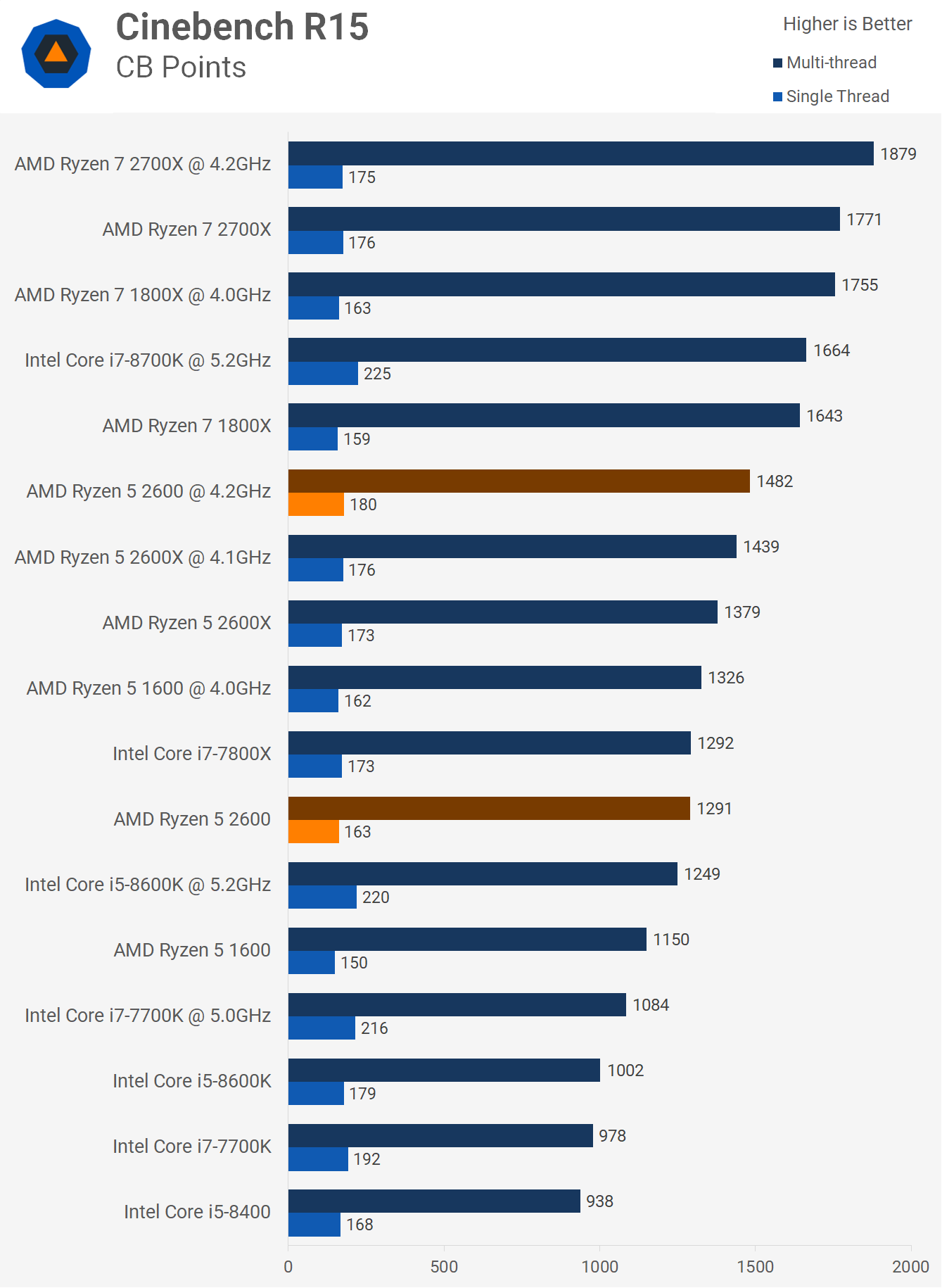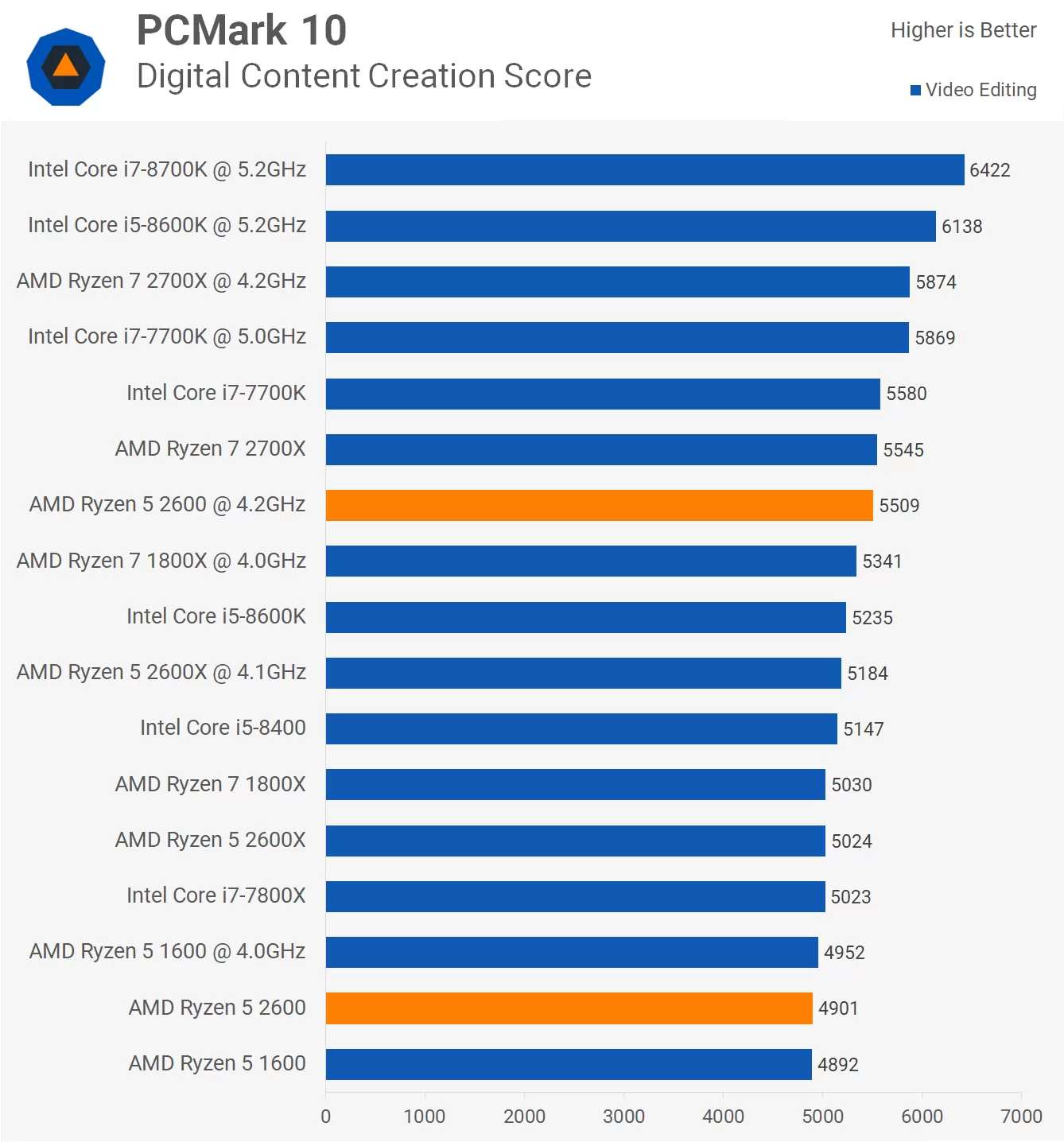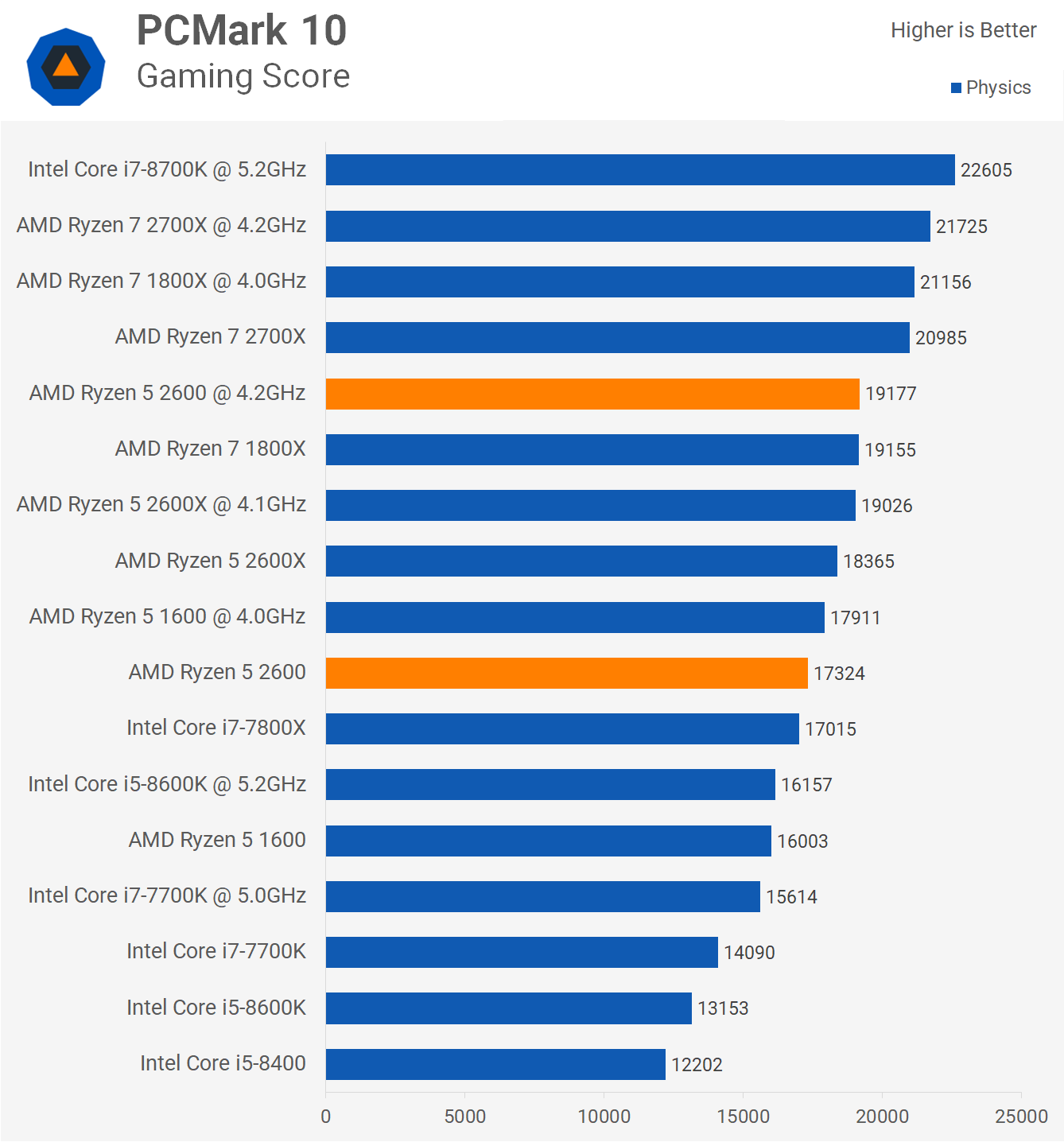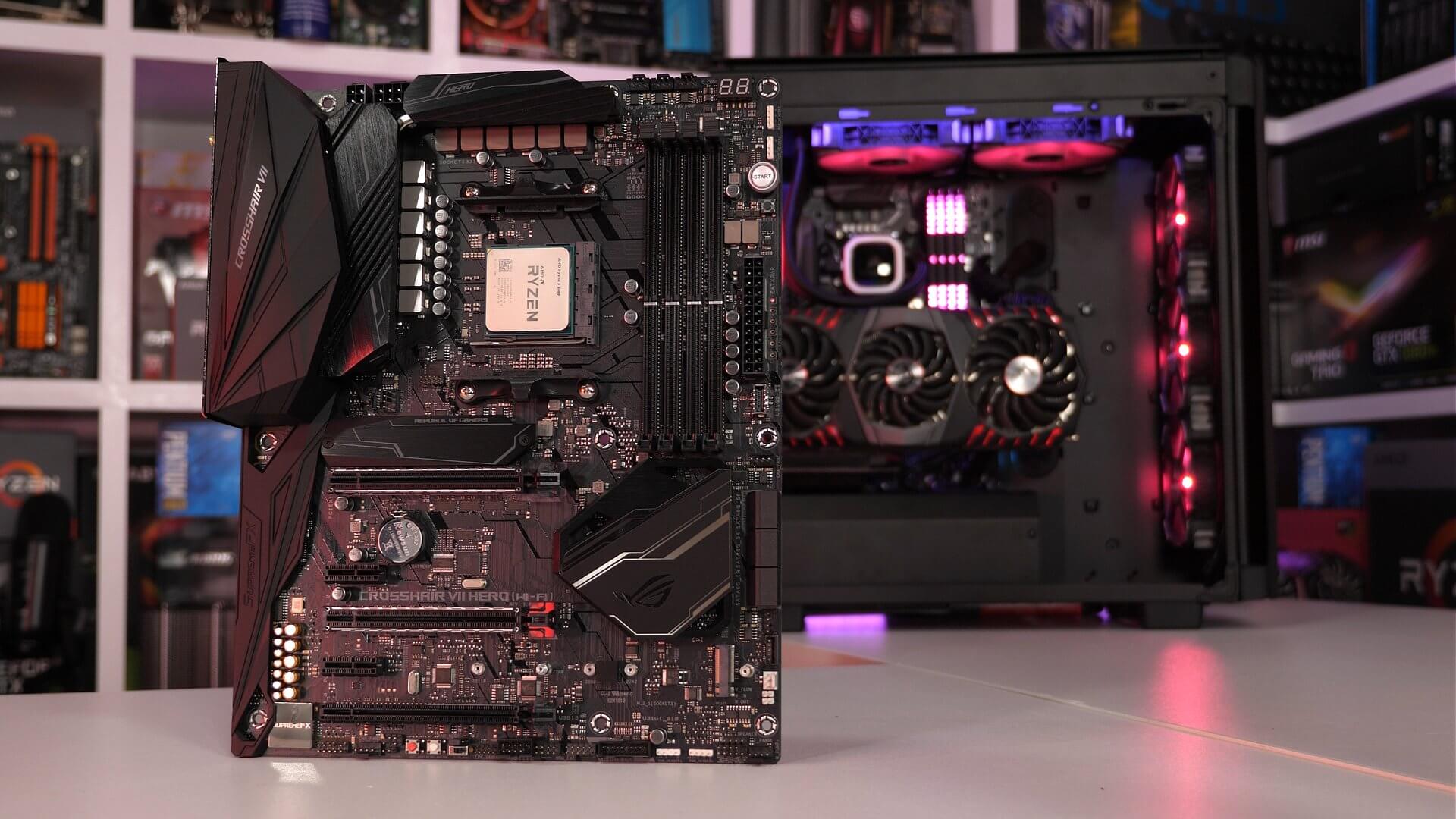Today we're checking out the $200 Ryzen 5 2600 and we'll be taking it for a spin on the impressive new Asus ROG Crosshair VII Hero, a $300 AMD X470 motherboard with all the bells and whistles you can imagine. Even though the Ryzen 5 2600 is better suited to more affordable motherboards like the ROG Strix X470-F Gaming or the Prime X470-Pro considering its price, the motherboard choice shouldn't affect performance while we get the opportunity to showcase this ROG board, in what is another of the multiple different tests we've planned for the coming weeks.
The R5 2600 is $30 cheaper than the 2600X we tested on 2nd-gen Ryzen's launch day. That 13% saving sees operating clock speeds reduced by 6-7%, while the box cooler has been downgraded from the Wraith Spire to the dinky little Wraith Stealth. We'll check out how that performs later on.
The real competition though comes from the blue team's Coffee Lake Core i5 range, in particular the Core i5-8400 which is a little more affordable at $179. The Ryzen 5 2600 does have two distinct advantages though: first, it can be overclocked and push all cores past 4 GHz, meanwhile the i5-8400 is limited to an all core frequency of 3.8 GHz.
Second, and perhaps the biggest advantage is that the Ryzen R5 2600 is a 6-core/12-thread processor. The 8400 lacks Hyper-Threading meaning it's a 6-core/6-thread CPU and this will hand Ryzen a serious advantage in core heavy workloads.
AMD has stayed on an aggressive note when pricing 2nd-gen Ryzen CPUs. Last year the Ryzen 5 1600 launched at $220, though it eventually was sold for a bit less until it was officially discounted to $190 early this year. The 2600 is coming in at just a fraction more than the older and discounted 1600. Apart from improved IPC performance, greater power efficiency, reduced cache latency, enhanced memory latency and frequency support, the 2600 also comes clocked 6-8% higher than the 1600 out of the box. Then like the rest of the Ryzen lineup the 2600 is also an unlocked CPU, so reaching and exceeding stock 2600X performance shouldn't be an issue.
Before the testing, just a quick recap in case you missed last week thorough review of the 2600X and 2700X. All the data has been updated for the release of the 2nd-gen Ryzen CPUs, this means it's all fresh and has been gathered in the past 2 weeks. All testing was done with the latest drivers, Windows updates, motherboard BIOS updates, game and application updates and security updates. Yes, the latest Spectre and Meltdown patches have been applied.
Throughout the testing we'll be looking at stock out of the box performance as well as overclocking. The 1st gen Ryzen CPUs have been overclocked to 4 GHz while I was able to get the 2600X stable at 4.1 GHz and the 2700X at 4.2 GHz. The vanilla 2600 was able to boot into Windows and complete a number of tests at 4.3 GHz using the same 1.375 volts that limited the 2600X to just 4.1 GHz. Unfortunately though cranking the voltage right up didn't allow us to stabilize the overclock for our heavy Blender workload, so we were forced down to 4.2 GHz.
Something else worth noting was that the 2600 would suffer the dreaded blue screen of death when using our G.Skill Sniper X DDR4-3400 CL16 memory, the integrated memory controller doesn't seem to be as good as what we found with the 2600X and 2700X. Therefore I switched to G.Skill's FlareX DDR4-3200 CL14 memory, you don't really sacrifice much with this lower frequency memory due to the tighter timings.
This could just be an issue with my chip or it could be more widespread with the non-X models, time will tell. Anyway enough chit chat, let's get to the good stuff.
Benchmark Time
First up here's a quick look at sustained memory performance and as you can see with lower latency CL14 memory actually edges out the higher clocked DDR4-3400 CL16 memory used by the 2600X. So despite using lower clocked memory the Ryzen 5 2600 shouldn't be at a disadvantage, with a bandwidth of just over 39 GB/s it's got plenty to play with.

Moving to Cinebench R15 we see that the 2600 trails the 2600X by a 6% margin for both the single and multi-threaded tests. Still out of the box it's able to mimic the Core i7-7800X and improves on the older Ryzen 5 1600's single thread score by a 9% margin and the multi-threaded score by an impressive 12% margin.

Overclocked though it edges out the slightly inferior 2600X chip which managed just 4.1 GHz, I suspect we got a poor chip. It seems like we have a similar situation to the 1600 and 1600X with the new 2600 and 2600X, both should be good for around the same overclock, this time 4.1 - 4.2 GHz.

Next up we have the PCMark 10 video editing results and here the stock Ryzen 5 2600 scores 4901 pts which placed it only just ahead of the R5 1600 but also just 2% behind the stock 2600X and Core i7-7800X.
Overclocked to 4.2 GHz the score jumped up by 12% to reach 5509 pts and that's almost on par with what the $330 Ryzen 7 2700X offers out of the box, so that's an exceptional result for the 2600.

This time when compared to the Ryzen 5 1600 the 2600 was 8% faster out of the box and 7% faster once both CPUs are overclocked to the max. Overclocked the 2600 also matched the Ryzen 7 1800X though due to a reduction in cores was 9% slower than the 2700X.


